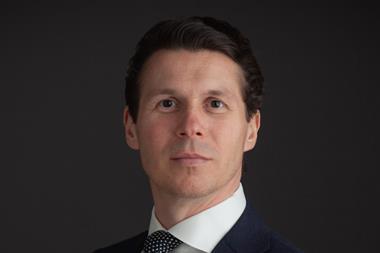Managing profitability, says Andrew Cave, is more about managing ordinary business cycles than reacting to disasters
?Some things don’t change. While much of the business world has started fretting about the term ‘sustainability’, insurers know full well how difficult it is for their own profits to be consistent over the long-term.
A recent Lloyd’s and Biba study found that more than 80% of brokers believe that maintaining profit throughout the insurance cycle is still the greatest challenge for the insurance industry as a whole. And the commercial lines market is a good example of the problem.
While major disasters and catastrophes hog the headlines, insurers’ profitability is more often tied to the prosaic but inevitable volatility of premium pricing that is endemic to the industry.
But why is the commercial lines market so soft? What effect are factors such as climate change and terrorism having on the commercial lines market? And what is the outlook going forward?
Malcolm Smith, commercial lines manager at Groupama, is in no doubt that the market is still fiercely competitive.
“On existing business, we think renewal premiums will be about 7.5% down this year,” he says, “which is the same as last year and the year before. We are now in the third year of reductions at that level and the overall effect is cumulative.”
Jon Bates, operations director at Anglo Pacific Consultants, is even more pessimistic.
“With the market as it is, with economic conditions as they are, and with no sign of any fundamental change on the immediate horizon, we believe that the market will remain soft into 2009,” he says.
So what is going on? The answer, Smith says, is a changing one. “Last year, it was property rates that were coming under most pressure. Now it is liability rates, which are the result of liability doing better over the last couple of years. The market is reacting to that.
“Insurers have had three very good years of profitability on the commercial side so there is no let-up in their appetite to offer com-petitive rates on commercial lines.”
He adds: “There are some players in the market who were not there previously. Lloyd’s operators are now competing in a marketplace that was traditionally the preserve of composite insurers. This year has possibly become even more competitive.”
Bates believes further consolidation in the sectors could have a marked impact.
“With insurers flocking to this line, attracted by its traditional profitability, and keen to bolster their books with sterling, the market remains very competitive.
“Of course, managing the cycle is as much a challenge to brokers as it is to insurers. Those in the industry that have invested in technology and have efficient systems will be best equipped to steer a profitable route through the cycle.
“With efficient systems in place that are attractive to both insurers and brokers, levels of client service will remain high even as premiums soften.
“Our underwriting platform leads us to believe that rates will remain reasonably stable over the next few years before we see an upturn in the cycle.”
Managing volatility
Other structural explanations abound. Amanda Blanc, chief executive of UK broking at Towergate, believes the key to managing the volatility in the market is by maintaining local links.
“Large and niche brokers and those with a local presence are better positioned to maintain profit through the current soft market cycle.
“It is only when you are close that you can fully understand the risks you are presenting to underwriters, and this undoubtedly has a positive impact on the underwriting profitability of a business.”
She adds: “If you underwrite from a centralised location, how can you possibly understand areas and the businesses in them and recommend a suitable risk management proposition.
“The passion that the niche brokers have for understanding their customers and building products for them ensures that they provide best advice, which in turn ensures that the businesses are protected and produce better loss ratios.”
None of that, however, is much solace to commercial lines insurers anxious to get rates climbing again.
Jon Woodman, trading director at Royal & SunAlliance, says: “Over the past three or four years most commercial lines business has seen reduced rates.
“There is a lot of capacity in the market and, generally speaking, insurers have enjoyed a very benign experience from natural catastrophes.
“In pricing terms, insurers expect a certain amount of weather losses, so when they are not affected, more people are encouraged to come into the market, which has the effect of depressing prices.
“What’s interesting is that events like the July 7 bombings and Hurricane Katrina would have been expected to cause major reverberations in the market but that didn’t really happen. People quickly realised that these were unique events.”
Woodman believes a similar sense of detachment is preventing the climate change debate from having much effect on commercial lines pricing.
“There does not seem to be a direct relationship between climate change warnings and short-term pricing,” he says.
Stabilising prices
The issue is not whether profitability needs to rise – most insurers have enjoyed good returns over the past three years – but whether more premium falls, of the kind seen in the last three years, will suck the industry into another of its periodic crises.
Woodman doesn’t think so and argues that some smoothing of the pricing cycle is called for.
“Brokers and customers ultim-ately value the stability of prices and smoothing of pricing is un-doubtedly in the interests of both.
“Our belief is that having sustainable profitability is important. It gives stability to our customers.
He adds: “The million dollar question is whether the trends of the past three years will continue. But it is a matter of writing business at rates that are sustainable.
“We have a strong belief that we need to write business to make an underwriting profit and that is ultimately the only sustainable proposition for customers and shareholders.”
Hosted by comedian and actor Tom Allen, 34 Gold, 23 Silver and 22 Bronze awards were handed out across an amazing 34 categories recognising brilliance and innovation right across the breadth of UK general insurance.













































